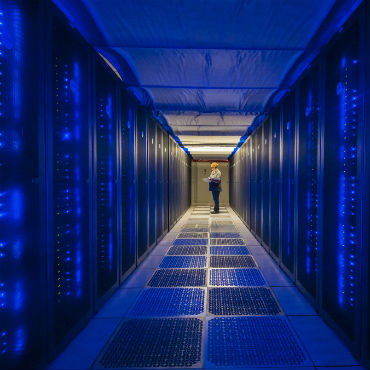U.S. commits $250M to spur supercomputing speeds

The Energy Department has committed over $250 million in research and development funding to six computer makers for the next-generation supercomputer, as China eclipses the U.S. in computing speed.

The Department of Energy hopes to accelerate development of the nation's first exascale computer, with over $250 million in funding to some of the country's top computer makers.
Energy Secretary Rick Perry announced on June 15 the $258 million funding awards under the agency's Exascale Computing Project, which is part of the agency's PathForward program for high-performance computing development. The ECP looks to accelerate the research and development of exascale supercomputers with private industry.
Exascale computing is a holy grail of sorts in computing. With the technology's potential to perform a million trillion operations per second, it stands to not only help researchers unlock the secrets of the universe, but along the way vastly improve data analytics in cybersecurity, climate change modeling, aerodynamics and energy applications.
China has been accelerating development of supercomputers in recent years and is home to the most powerful high-performance computing system. In the spring of 2016, China debuted its 93 petaflop Sunway TaihuLight system at the National Supercomputing Center in Wuxi. According to a report from a meeting hosted by DOE and the National Security Agency, many experts agreed that China would be leading the world in supercomputing by 2020. China has said that it plans to break the exascale barrier by 2020.
The ECP program and the push to get an exascale system, or possibly two, operational isn't to catch up to China, said ECP Director Paul Messina. Its goal is to develop an exascale computer that is capable of working through actual applications. Messina said it's unclear if China's system is exascale only at raw peak operational speed, or like the EPC's effort, it will be capable of working on actual applications.
Messina said the joint development with commercial companies is essential to tackle development of memory architectures, higher speed interconnects, improved reliability and approaches for increasing computing power without prohibitive increases in energy demand.
The funds will be distributed over a three-year period to six companies to accelerate the research necessary to deploy the first exascale supercomputers in the U.S. by 2021.
Advanced Micro Devices, Cray Inc., Hewlett Packard Enterprise, IBM, Intel Corp. and NVIDIA Corp. are being funded under the awards. Those companies will kick in additional funding that amounts to at least 40 percent of their total project cost, bringing the total investment to at least $430 million, DOE said.
"Continued U.S. leadership in high performance computing is essential to our security, prosperity, and economic competitiveness as a nation," Perry said in a prepared statement. "These awards will enable leading U.S. technology firms to marshal their formidable skills, expertise, and resources in the global race for the next stage in supercomputing -- exascale-capable systems."
The funding, said DOE, will support R&D in hardware technology, software technology and application development. Ultimately, the machines developed under the program will be purchased by DOE's national labs, according to Messina. The existing Titan system at Oak Ridge National Laboratory currently ranks third fastest in the world, behind two systems in China.
NEXT STORY: SAIC sees uptick in federal IT markets


